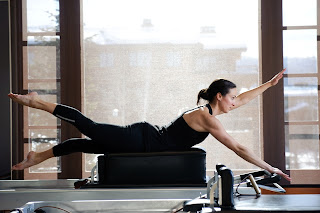Do you want to lose weight, sculpt and tone your body,
relieve stress, build stamina, or all of the above? Your goals will determine
the best course of action. Put simply, both strength training and
cardiovascular exercise offer benefits. Here’s the breakdown:
Strength Training
·
Weight
lifting torches calories. While popular belief once held that cardio
exercise was the way to burn calories, new research indicates that strength
training burns more calories than once believed. Furthermore, strength training
creates a metabolic spike, so your body continues to burn calories even after
you’re done—in fact, a University of Wisconsin study found that metabolism was
elevated for 39 hours after lifting weights. What’s more, a greater percentage
of calories are burned from fat during this time.
·
Stay
lean. For every three pounds of muscle you build, you’ll burn an extra 120
calories a day—just doing nothing. It’s a fact. Muscle takes more energy to
sustain, so by building muscle, you’re eliminating fat and trimming your
physique. Put simply—if you want to look better naked, lift weights.
·
Promote
functional strength and health. Functional strength training incorporates
balance, strength, and agility. This regimen promotes balance and health and
can prevent injuries. In contrast, the repetitive nature of some cardiovascular
exercise can cause strain and injury if it’s not supplemented with strength
training.
Cardiovascular
Exercise
·
Relieve
stress. Cardiovascular exercise releases endorphins and elevates serotonin
levels in the brain, which helps alleviate depression and relieve stress. In
fact, just 15 minutes of cardio several times a week can significantly reduce
anxiety.
·
Build
stamina. Cardiovascular exercise helps build stamina and reduce fatigue.
·
Improve
immune system. Cardiovascular exercise has been shown to activate the
immune system and fight off infection. People who do regular cardio exercise
are less susceptible to colds and flu.
·
Prolong
life. Regular cardio exercise has been shown to prolong life. Aerobic
exercise promotes oxygen delivery to the muscles and improves heart health. A
stronger heart pumps more blood with each beat. Cardio exercise has been shown
to prevent inflammation, raise good cholesterol levels, and reduce the risk of obesity, heart
disease, high blood pressure, diabetes, osteoporosis, stroke, and even certain
types of cancer.
·
Burn
calories. Though cardio exercise doesn’t burn calories on the level of
strength training, it still offers plenty of benefit.
The bottom line—both cardio and strength training offer
numerous benefits and both will leave you feeling great. The best exercise
regimens probably incorporate both types of exercise for overall fitness and
health. That said, if you have only 30 minutes to spare and you’re trying to
decide how to spend them, consider what you need at the moment. Are you feeling
stressed and anxious? Then go for the cardio. But, if you just need a good
workout, a lot of new research indicates that the strength training will offer
more benefit in terms of burning calories and reducing fat.
Whatever you choose, remember to have fun!









